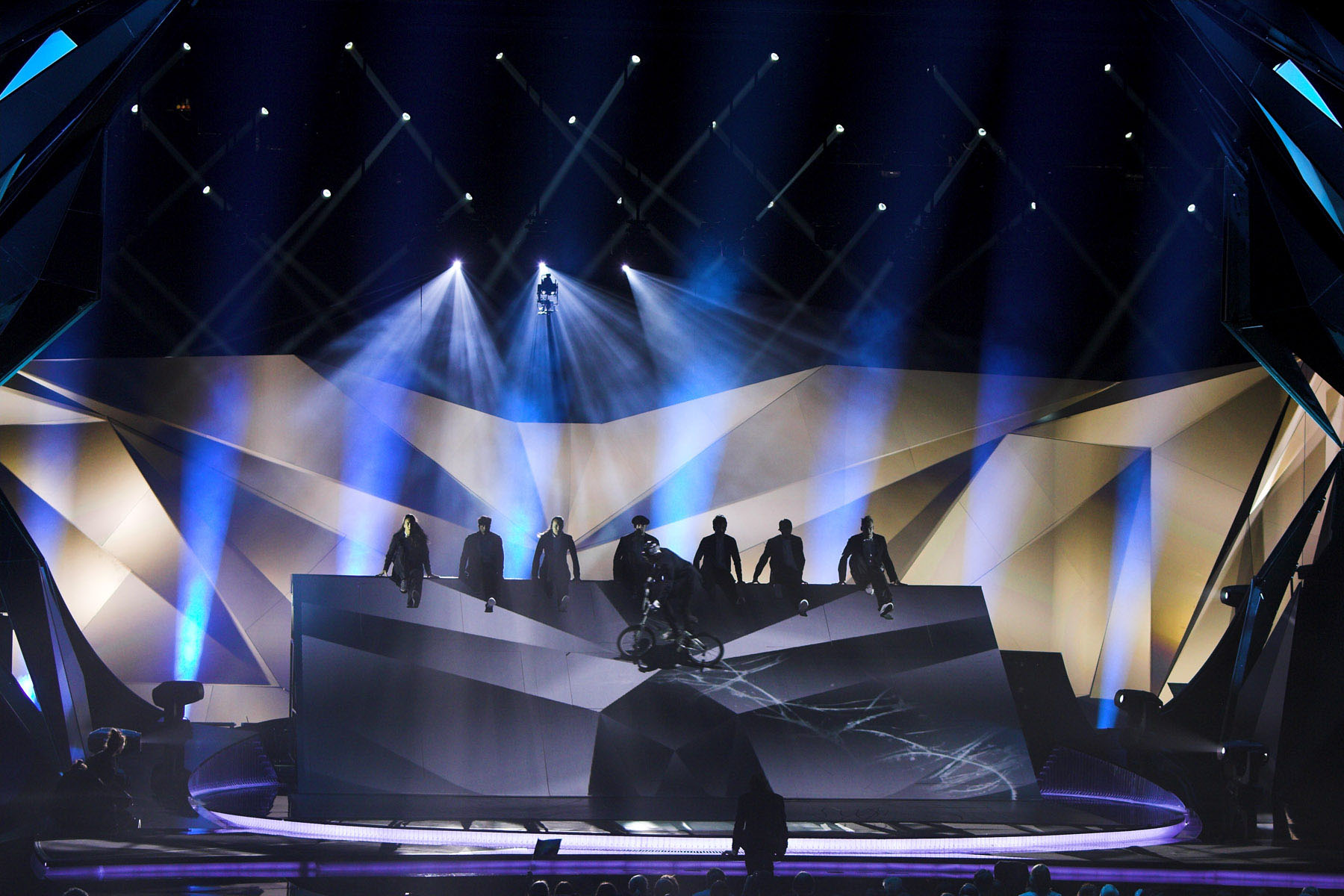Broadcast live to an audience of 125 million, the Eurovision Song Contest is the world’s biggest live music contest.
Sennheiser’s Digital 9000 wireless microphone system was at the heart of the infrastructure for this technically complex event.
Host broadcaster was Danmarks Radio (DR) who relied on Sennheiser’s Digital 9000 for the audio transmission of the show. 96 channels of this digital wireless microphone system were deployed for the contest, the VIP area and the press centre which included part of DR’s own 24-channel Digital 9000 system.
Sennheiser also supported 28 channels for the artists’ wireless monitoring.
The event was held on Refshaleøen island in the B&W Hallerne, a former shipbuilding hall that was specially converted for the contest. The venue presented a serious challenge to the technicians as it proved to be an incredibly difficult environment for all users of RF wireless, not only for wireless microphones and monitoring systems.
Jonas Næsby, RF specialist with Sennheiser Nordic, was on site for DR to provide assistance to the broadcaster with the microphone and monitoring set-up.
“We knew that the available spectrum was very limited as 22 TV channels were already fully occupied. This made frequency planning slightly difficult – especially as wireless mics were not the only devices that needed spectrum,” explains Jonas. “However, the biggest challenge we faced was unquestionably the hall itself.”
Both the walls and roof are made of metal as were the stands to seat the audience and to make matters worse the floor was constructed from heavily reinforced concrete.
“Never before have I encountered such a huge amount of reflections and if somebody had told me that they knew of an arena that could affect RF transmission this much then I would never have believed it prior to this experience,” says Jonas.
With a length of 175 metres and a height of 70 metres, the metal hall caused reflections that partially ran over 300 metres and then hit the receiving antennas with a considerable delay compared to the direct signal. However, the usual amount of damping did not occur and the indirect signals had much higher signal strengths than typically encountered in music venues. This phenomenon was caused by the metal walls and ceiling, which formed corner reflectors and boosted the signal by in-phase additions.
So how were the issues overcome?
“We had pretty much optimised everything that was there to be optimised: the fine-tuning of the Digital 9000 system, the antenna positions, everything. And of course conditions improved a bit when the audience was in place,” continues Jonas. “In addition, we had also adapted the digital signal processing of the system which meant that even signals that arrived at the receiver extremely late and with high signal strengths were correctly combined with the RF signal that had arrived earlier. This meant that the Digital 9000 firmware was able to detect such critical instances and could cope with such extremely rare problems. This could not have been achieved with an analogue system and in fact would not be possible with just any digital system.”










